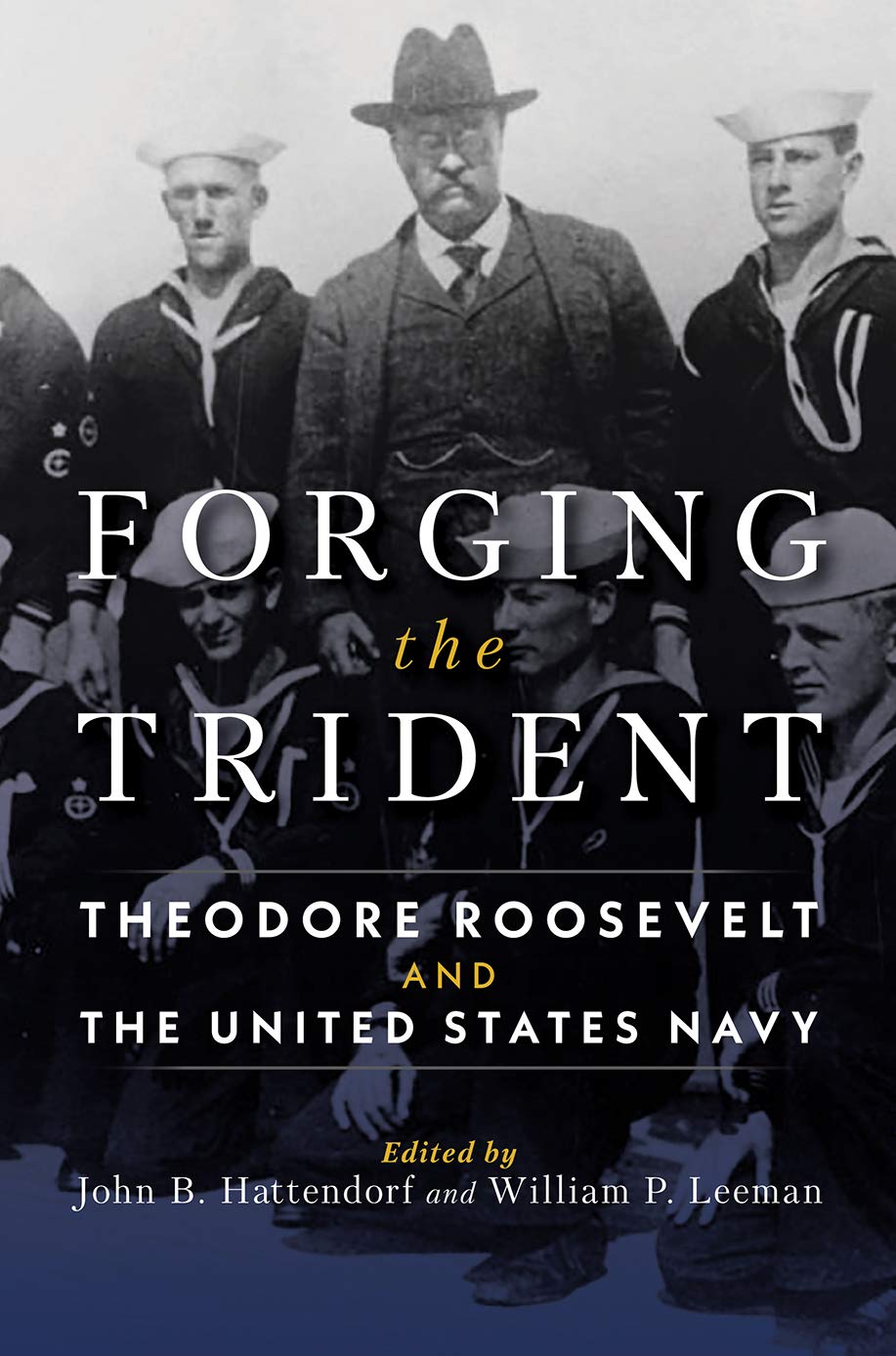Forging the Trident: Theodore Roosevelt and the United States Navy
Edited by John B. Hattendorf & William P. Leeman
 Throughout history, politicians have sought to leave a lasting impact on an organization, institution, or service. Perhaps no individual left a more significant mark on the United States Navy as Theodore Roosevelt, who served as Assistant Secretary of the Navy and as President amid momentous transitions in naval theory, construction, and tactics. His youthful interest in the Navy continued into adulthood where, in his positions of influence, Roosevelt applied his knowledge and sense of innovation to the increasingly effective United States Navy. In their edited collection of essays, Forging the Trident: Theodore Roosevelt and the United States Navy, John B. Hattendorf and William P. Leeman brilliantly demonstrate how, almost singlehandedly, Roosevelt formed the foundation of the modern United States Navy.
Throughout history, politicians have sought to leave a lasting impact on an organization, institution, or service. Perhaps no individual left a more significant mark on the United States Navy as Theodore Roosevelt, who served as Assistant Secretary of the Navy and as President amid momentous transitions in naval theory, construction, and tactics. His youthful interest in the Navy continued into adulthood where, in his positions of influence, Roosevelt applied his knowledge and sense of innovation to the increasingly effective United States Navy. In their edited collection of essays, Forging the Trident: Theodore Roosevelt and the United States Navy, John B. Hattendorf and William P. Leeman brilliantly demonstrate how, almost singlehandedly, Roosevelt formed the foundation of the modern United States Navy.
Within this edited publication are several articles which chart Roosevelt’s attentiveness towards the historical role of a nation’s navy, particularly in the way large capital ships could be used to exert influence abroad. As instructors at the Naval War College and the United States Military Academy, respectively, Hattendorf and Leeman relied upon their significant knowledge of military history, particularly the development of American naval strength. Equally fitting, many of the essays touched on Secretary, and later President, Roosevelt’s relationship with the Naval War College in Newport, Rhode Iisland. He used the Naval War College, as well as the United States Naval Academy in Annapolis, to stage his promotions of a ‘New Navy’ through remembrances of American naval heroism, like John Paul Jones, and demonstrations of the new class of battleships. It comes as no surprise that the editors devoted tremendous attention towards Roosevelt’s interest in shaping the educational mission at these institutions.
Ever the student of history, the former Rough Rider drew from his own knowledge of naval theory to create the ideological framework which his naval improvements would take place in. He envisioned the Navy as the primary method for demonstrating American foreign policy abroad. Through a new class of steel battleships, the Navy could prove America’s ability to participate on the world stage. The struggle to approve and construct these new battleships exposed many differences between the competing ideologies of the president and the military hierarchy, which the authors chronicle fairly and in detail. Yet, Roosevelt’s indomitable will advanced his vision tangibly and laid the groundwork for adopting successive advances in naval technology.
For all the attention the authors devoted towards Roosevelt’s naval interests and his own endeavors, they also recounted the supporting cast which influenced his thoughts and advanced his agenda during his time in office. Each chapter extensively the cast of characters revolving around Roosevelt’s in his years as a public servant. Most interestingly, one of the last essays analyzed the president’s relationship with each of his Secretaries of the Navy, perhaps owing to his own previous employment in that office. The author critically examines how Roosevelt managed and encouraged each of these individuals, as he masterfully balanced their own political ambitions with his.
Many scholars have already heaped immense praise on Theodore Roosevelt’s efforts to reform the American Navy while employed in the Department of the Navy and as President. Hattendorf and Leeman succeeded in delving deeper into his own inspirations, motivations, and aptitude for performing such a task. The collection of essays within Forging the Trident trace Roosevelt’s obsession with naval tactics and theory, as well as his buttressed belief that a revamped navy would be the means which the United States could protect its new empire. The editors succeed in crafting a work which delved deeper into Theodore Roosevelt’s obsession with naval innovations, and which can be appreciated by naval enthusiasts and scholars alike.
- Annapolis: Naval Institute Press, 2020
- 6-1/4” x 9-1/4”, hardcover, x + 293 pages
- Photographs, notes, index. $48.00
- ISBN: 9781682475348
Reviewed by: William Nassif, University of South Carolina
